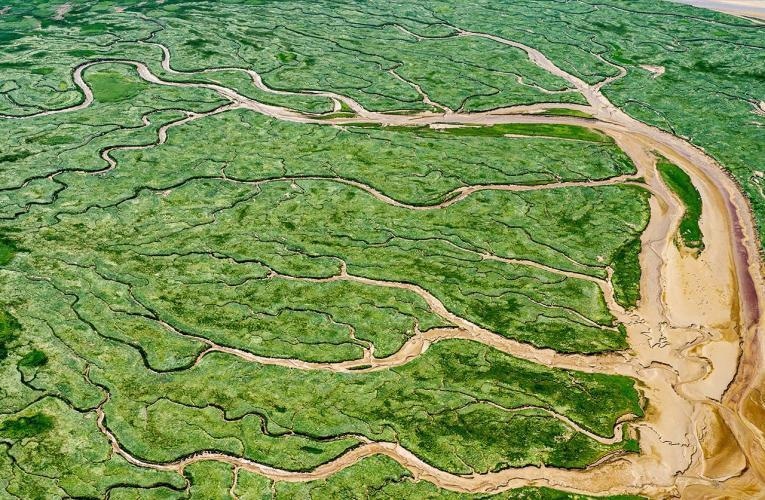
A new study, which has appeared in the May 5th issue of Science, by a collaborative team of Dutch, German, and American researchers reveals that it is not too late to reverse the damages.
The crucial factor to success, the researchers explain, is implementing advanced restoration practices — pinpointed in the new study — that imitate natural landscape-building processes and improve the carbon-storing potential of restored wetlands.
This must be done on a large scale.
"About 1 percent of the world’s wetlands are being lost each year to pollution or marsh draining for agriculture, development, and other human activities. Once disturbed, these wetlands release enormous amounts of CO2 from their soils, accounting for about 5 percent of global CO2 emissions annually."
Brian R. Silliman, Study Co-Author and Rachel Carson Distinguished Professor of Marine Conservation Biology, Duke University
“Hundreds, even thousands of years of stored carbon are exposed to air and start to rapidly decompose and release greenhouse gases. The result is an invisible reverse waterfall of CO2 draining into the atmosphere. The wetlands switch from being carbon sinks to sources.” Silliman added.
"The good news is, we now know how to restore these wetlands at a scale that was never before possible and in a way that both stops this release of carbon and re-establishes the wetland’s carbon storing capacity."
Brian R. Silliman, Study Co-Author and Rachel Carson Distinguished Professor of Marine Conservation Biology, Duke University
Silliman explained the reason why the majority of wetlands are so successful at carbon storage is that they are made and held together by plants that grow very close together. Their thick above- and below-ground mats of roots and stems capture nutrient-abundant debris and protect the soil against drying out or erosion — all of which help the plants to thrive well and the soil layer to develop, trapping in plenty more CO2 in the process.
With regard to raised peat bogs, the process functions slightly differently, Silliman observed. Layers of living peat moss on the surface serve as sponges, absorbing huge quantities of rainwater that facilitate its own growth and maintain a much thicker sheet of dead peat moss below it permanently under water.
This stops the lower layer of peat, which can measure nearly 10 m in thickness, from drying out, decomposing, and discharging its stored carbon back into the air. As the living mosses progressively form, the amount of carbon captured below ground constantly grows.
Fruitful restorations must reproduce these processes, he stated.
“More than half of all wetland restorations fail because the landscape-forming properties of the plants are insufficiently taken into account,” said study coauthor Tjisse van der Heide of the Royal Institute for Sea Research and the University of Groningen in the Netherlands. Planting seedlings and plugs in systematic rows equidistant from each other may appear logical, but it is ineffective, he stated.
"Restoration is much more successful when the plants are placed in large dense clumps, when their landscape-forming properties are mimicked, or simply when very large areas are restored in one go."
Tjisse van der Heide, Study Co-Author, Royal Institute for Sea Research and University of Groningen
“Following this guidance will allow us to restore lost wetlands at a much larger scale and increase the odds that they will thrive and continue to store carbon and perform other vital ecosystem services for years to come,” Silliman said. “The plants win, the planet wins, we all win.”
Silliman and van der Heide carried out the new study with researchers from the Netherlands’ Royal Institute for Sea Research, the University of Groningen, the University of Florida, Utrecht University, Duke University, Radboud University, and Greifswald University.
By combining data on carbon capture from the latest scientific studies, they discovered that forests and oceans capture the most CO2 worldwide, followed by wetlands.
"But when we looked at the amount of CO2 stored per square meter, it turned out that wetlands store about five times more CO2 than forests and as much as 500 times more than oceans."
Ralph Temmink, Study First Author and Researcher, Utrecht University
The new study received funding from the Dutch Research Council, Duke RESTORE, the Lenfest Ocean Program, the Oak Foundation, the National Science Foundation, and Natuurmonumenten.
Besides his faculty position at Duke’s Nicholas School, Silliman is the director of Duke RESTORE.